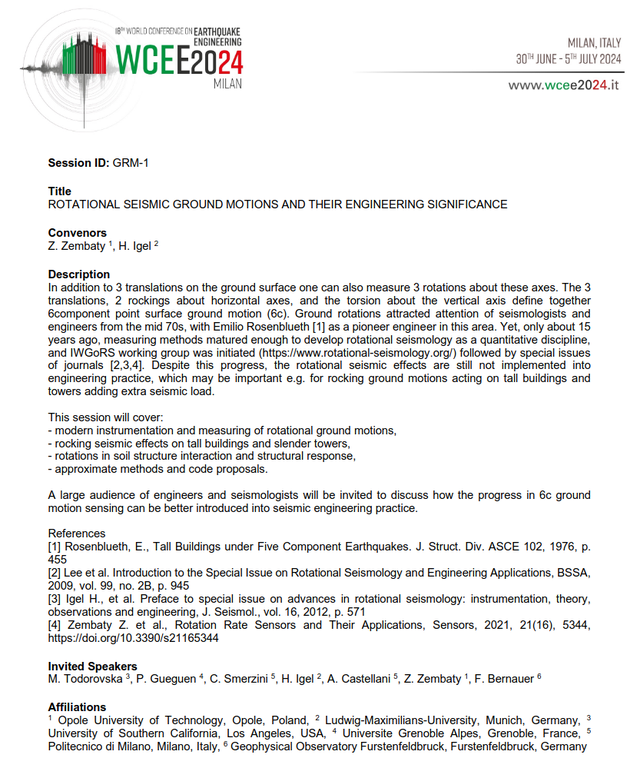10th World Conference on Earthquake Engineering in Milan
- https://www.rotational-seismology.org/10th-world-conference-on-earthquake-engineering-in-milan
- 10th World Conference on Earthquake Engineering in Milan
- 2024-06-30T00:00:00+00:00
- 2024-07-05T23:59:59+00:00
- When Jun 30, 2024 to Jul 05, 2024 (UTC / UTC0)
- Where Milan
- Web Visit external website
-
Add event to calendar
iCal
In addition to 3 translations on the ground surface one can also measure 3 rotations about these axes. The 3 translations, 2 rockings about horizontal axes, and the torsion about the vertical axis define together 6component point surface ground motion (6c). Ground rotations attracted attention of seismologists and engineers from the mid 70s, with Emilio Rosenblueth [1] as a pioneer engineer in this area. Yet, only about 15 years ago, measuring methods matured enough to develop rotational seismology as a quantitative discipline, and IWGoRS working group was initiated (https://www.rotational-seismology.org/) followed by special issues of journals [2,3,4]. Despite this progress, the rotational seismic effects are still not implemented into engineering practice, which may be important e.g. for rocking ground motions acting on tall buildings and towers adding extra seismic load.
There will be a special 'rotational' session during the 18th WCEE - abstract submission until May, 31th 2023!!

.png)